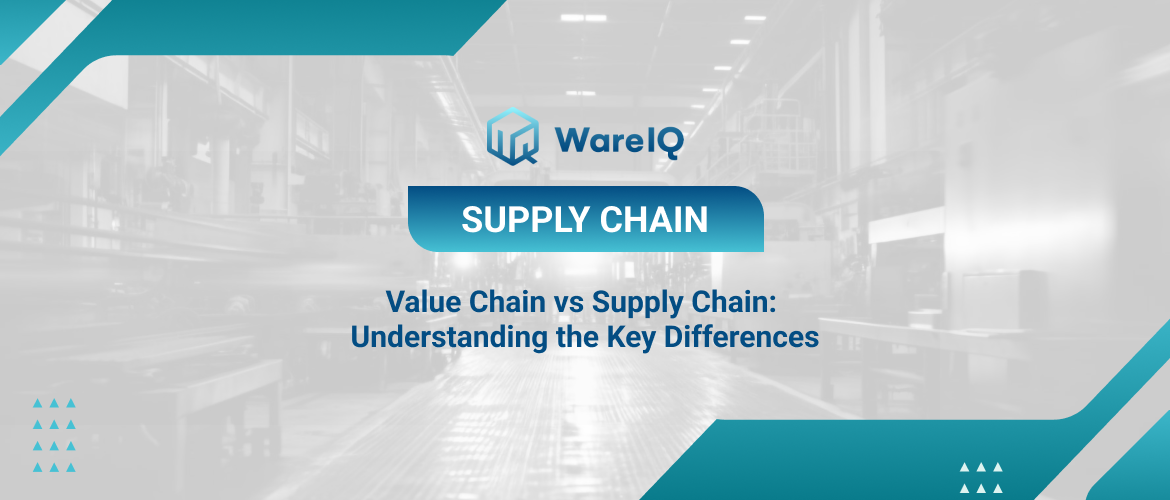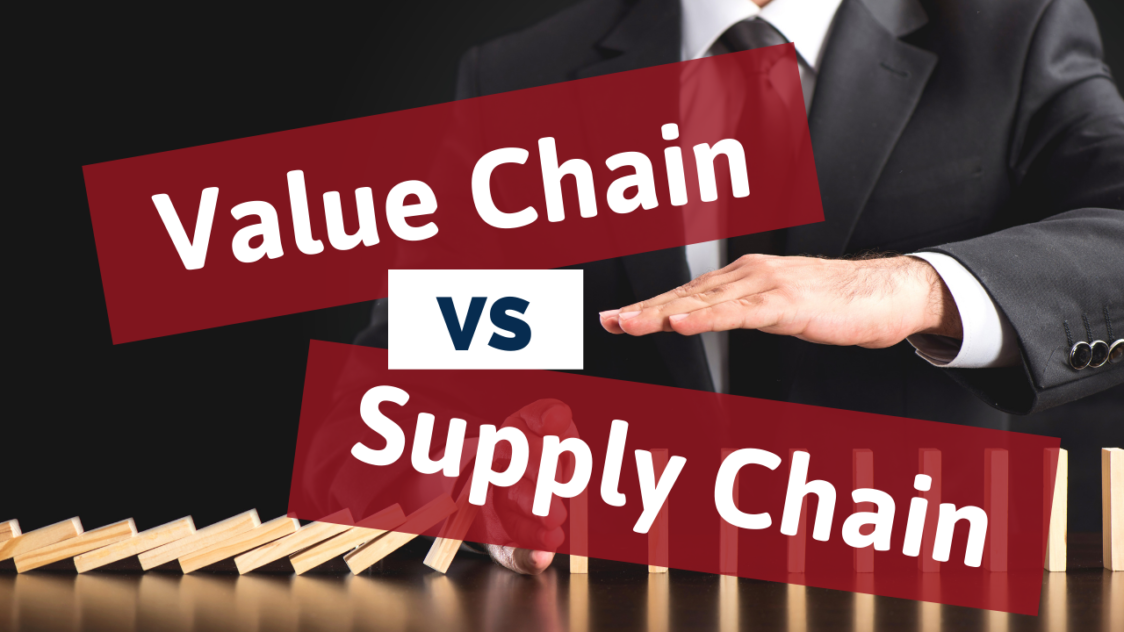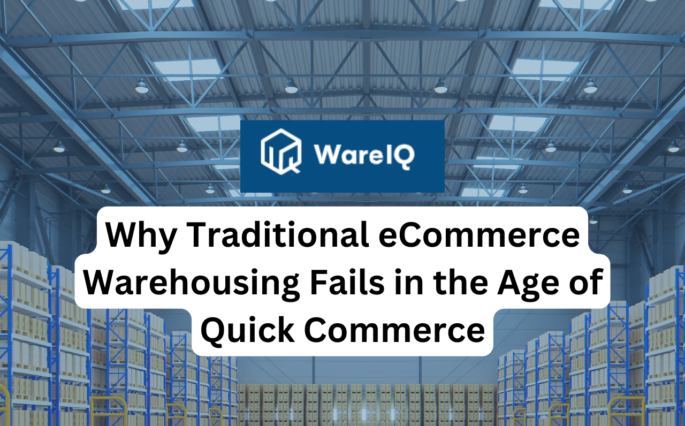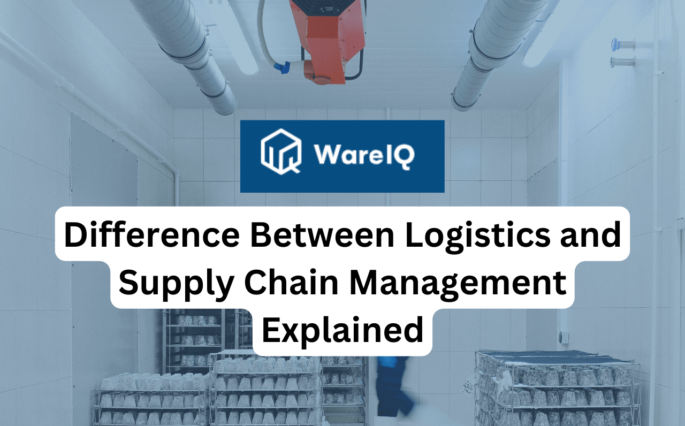Value Chain vs. Supply Chain


Businesses that want to do more to delight customers and gain competitive advantage can use the time-tested “value chain” approach to evaluate and improve their entire operations from the standpoint of how they produce value for the customer.
- What is a Value chain?
- How do Value Chains Work?
- The Importance of a Value Chain
- What is a Supply Chain?
- How does the Supply Chain work?
- Importance of Supply Chain
- Value Chain vs. Supply Chain
- FAQs
- What is the main focus of a Value Chain?
- How does a Value Chain differ from a Supply Chain?
- What are the components of a Value Chain?
- How does a Value Chain work to improve efficiency?
- What are the key areas of improvement in Value Chain Management (VCM)?
- What is the primary goal of Value Chain Management?
- What is the fundamental concept behind a Supply Chain?
- Why is Supply Chain Management crucial for businesses?
- What areas does Supply Chain Management typically attempt to control or link?
- What is the primary goal of a Supply Chain?
What is a Value chain?
A value chain is a model that includes every step a company takes to create a good or service, from the initial idea to delivery to the customer. Initial design, material sourcing, manufacturing, marketing, sale, delivery, and after-sales service are all part of the value chain. That should sound a lot like a supply chain. Value chains encompass more business activities than supply chains, but the main distinction is their customer-centric approach.
How do Value Chains Work?
The value chain concept works by breaking down the process of creating and delivering a product or service in order to better assess the overall efficiency of the process. The value chain model provides businesses with a clearer picture of how expenses are allocated across the entire product delivery cycle. Businesses can then adjust their business strategy to reduce production and financial inefficiencies for greater cost savings and value creation.
The Importance of a Value Chain
| Key Areas of Improved Value Chain Management (VCM) | Benefits |
| Bids and Proposals | Enhanced ability to capture, track, and manage customer and marketing requirements Improved estimation of design, planning, procurement, production, and service activitiesIncreased accuracy in cost estimates with complete traceability. |
| Product Planning, Research, and Development | Development of a cross-functional team approach Focus on program performance, cost reduction, and product quality Efficient planning and implementation of simultaneous projects Effective resource allocation, cost management, scheduling, and deliverable tracking. |
| Standardized Processes | Implementation of repeatable and measurable business processes Management of product master data to meet customer expectations Efficient release and change processes from concept to implementation Reduction of overall operational inefficiencies and waste. |
| Vendor Management | Synchronization of design and sourcing teams with vendors Ensured management of outsourced components and subsystems Compliance with performance, quality, schedule, and cost requirements Prevention of design flaws, excess inventory, and waste. |
| Post-Sales Service and Support | Better management and tracking of in-service product configuration changes Coordination among field service, customer support, and engineering resources. |
| Reduced Costs | Optimization of value chain components Streamlined processes Reduced inefficiencies and wasteImproved inventory control Enhanced product quality. |
| Improved Profitability | A comprehensive and robust VCM program contributes to enhanced revenues Better profit margins Overall greater business success. |
What is a Supply Chain?
A supply chain is a network of individuals and businesses involved in the creation and delivery of a product to the consumer. The chain starts with the raw material producers and ends when the van delivers the finished product to the end user.
Supply chain management is critical because a well-managed supply chain leads to lower costs and a more efficient production cycle. Companies strive to improve their supply chains to lower costs and remain competitive.
How does the Supply Chain work?
Supply chain management is a continuous effort by businesses to make their supply chains as efficient and cost-effective as possible.
Typically, SCM attempts to centrally control or link a product’s production, shipment, and distribution. Companies can reduce excess costs and unnecessary steps in the supply chain, allowing them to deliver products to customers faster. This is accomplished by maintaining tighter control over internal inventories, internal production, distribution, sales, and vendor inventories.
SCM is based on the premise that nearly every product that enters the market is the result of the efforts of multiple organisations that comprise a supply chain.
Importance of Supply Chain
| Correct Product Assortment and Quantity | Accurate delivery of product assortment and quantityInfluences customer satisfaction. |
| Availability at the Right Location | Products available at the right locationDiminished satisfaction if products are not in stock. |
| Right Delivery Time | Timely delivery of productsLate deliveries decrease satisfaction. |
| Right After Sale Support | Prompt product servicingSatisfaction declines if support is delayed, especially in critical situations. |
| Decreases Purchasing Cost | Retailers rely on quick supply chains to avoid costly inventories. Fast delivery of expensive products reduces inventory costs. |
| Decreases Production Cost | Manufacturers depend on reliable supply chains to prevent material shortages. Delays in parts shipments can incur substantial costs. |
| Decreases Total Supply Chain Cost | Efficient supply chain design meeting customer service goals at the least total cost. |
Value Chain vs. Supply Chain
| Distinguishing Factors | Value Chain | Supply Chain |
| Scope | Encompasses all business activities from idea generation to after-sale service. | Focuses on the network of individuals and companies involved in creating and delivering a product. |
| Viewpoint | Customer-focused | Production and delivery-focused |
| Components | Initial design, materials sourcing, manufacturing, marketing, sale, delivery, after-sale service | Producers of raw materials, production, shipment, distribution, and delivery to the end user |
| Purpose | Evaluating and improving operations to create value for the customer. | Optimizing efficiency, lowering costs, and ensuring a more efficient production cycle. |
| Operational Emphasis | Breaks down the process of creating and delivering a product. | Ongoing effort to centrally control or link the production, shipment, and distribution of a product. |
| Efficiency Assessment | Assesses the efficiency of the entire process to create a clearer picture of expenses. | Seeks to make the supply chain as efficient and economical as possible. |
| Focus on Costs | Seeks greater cost advantages and value creation by altering business strategy. | Aims for lower costs and a more efficient production cycle. |
| Key Areas of Improvement | Enhancing the ability to capture, track, and manage customer requirements. | Improving correct product assortment, timely delivery, and after-sale support. |
| Overall Goal | Contributes to enhanced revenues, better profit margins, and overall business success. | Resulting in lower costs, a more efficient production cycle, and increased competitiveness. |
FAQs
What is the main focus of a Value Chain?
The main focus of a Value Chain is to evaluate and improve operations from the standpoint of creating value for the customer.
How does a Value Chain differ from a Supply Chain?
While both involve creating and delivering a product, a Value Chain encompasses more business activities and has a customer-centric approach.
What are the components of a Value Chain?
Components include initial design, material sourcing, manufacturing, marketing, sale, delivery, and after-sales service.
How does a Value Chain work to improve efficiency?
The Value Chain concept breaks down the process of creating and delivering a product to assess overall efficiency and identify areas for improvement.
What are the key areas of improvement in Value Chain Management (VCM)?
Key areas include enhanced ability to capture, track, and manage customer requirements, and improved estimation of design, planning, procurement, production, and service activities.
What is the primary goal of Value Chain Management?
The primary goal is to contribute to enhanced revenues, better profit margins, and overall business success.
What is the fundamental concept behind a Supply Chain?
A Supply Chain is a network of individuals and businesses involved in creating and delivering a product to the consumer.
Why is Supply Chain Management crucial for businesses?
Well-managed supply chains lead to lower costs and a more efficient production cycle, helping companies remain competitive.
What areas does Supply Chain Management typically attempt to control or link?
SCM attempts to centrally control or link a product’s production, shipment, and distribution.
What is the primary goal of a Supply Chain?
The primary goal is to optimize efficiency, lower costs, and ensure a more efficient production cycle.








